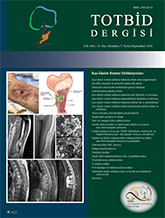
The term osteomyelitis come from osteon (bone), myelo (marrow) and itis (infection), thus defines infection of bone marrow by microorganisms. Osteomyelitis can be classified according to duration of symptoms (acute/chronic), to underlying pathogenesis (post-traumatic/hematogenic, etc.), to its location (spine/hip/knee/foot, etc.) and to the patient (newborn/child/adult/immuncompromised patients). Before the treatment, either medical or surgical, the patient should be evaluated throughly in terms of possible associated risk factors. During the evaluation, nutritional status, diabetes mellitus, vascular status of the extremity, renal and/or hepatic insufficiency, sickle cell anemia, chronic granulomatous diseases and other factors must be questioned in detail. The prevention of osteomyelitis requires decrease of bacterial incidence and inoculation into the wound. Surgical treatment should be preserved for cases which do not respond antibiotherapy. Detection of an abscess only does not warrant an absolute indication for surgery. Abscesses smaller than 3 mm especially may respond well to medical treatment. The appropriate treatment for osteomyelitis consists of adequate drainage, debridement of all necrotic tissues, filling of dead spaces, coverage of the wound and specific antibiotherapy.